
A Comprehensive Guide to Different Types of Mangoes in India
There is no trace of doubt that Mango is the most loved and popular fruit in our beautiful country- India, and why shouldn’t it be? There is nothing more refreshing, delicious and silky smooth as a bite of mango.
Did you know that there are 1500 varieties of mangoes cultivated in India? That’s more than any other fruit known to mankind. Now, with so many varieties, how does one decide? Fret not, that’s exactly what our blog is here to help you with.
Sadly, we can’t go about mentioning all 1500, but we definitely will mention the 10 most adored and well-known types of mangoes that you need to try. Ready to enter mango land? Read on!
1. Banganapalli, also known as Safedi
Banganapalli is the earliest variety of mangoes in the market and is originally from the Andhra Pradesh town of Banaganapalle (Now you know how it gets its name).
Color: Bright Yellow
Shape: Oval-shaped
Taste: Slightly Sour
Other Characteristics:
- Skin is edible
- Mostly used to make preservatives
- Weighs less than other mango varieties.
2. Payri
The mango Payri just like Banganapalli marks the early beginning of the mango season. This variety of mango grows in Karnataka, Maharashtra & Kerela
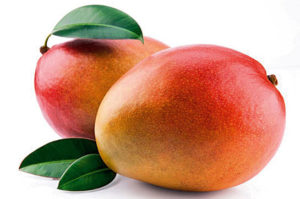
Season: April to June
Color: Yellow with Reddish Tinge on skin
Shape: Oval-shaped
Taste: Sweet with a noticeable sour taste
Other Characteristics:
- Used to prepare aamras
- Quality doesn’t last for a long time so have them as soon as you can after purchasing them.
- Weighs 250 to 450 grams
3. Kesar
The Kesar mango has a distinctive fragrance to it that can liven up your house. It is grown and cultivated in the Girnar mountains of Gujarat, Ahmedabad and is named after the spice ‘saffron’.
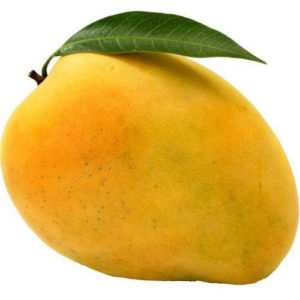
Season: June to July
Color: Skin is dull yellow with a green tinge and inside pulp is saffron-colored.
Shape: Roundish shape with a curved tip
Taste: Sweet but Milder in taste than Alphonso’s
Other Characteristics:
- Mostly used to make aamras
- Size is small to medium
- A bit expensive than other types of mangoes
4. Neelum
The Neelam mango is primarily grown in Tamil Nadu, Karnataka, and Andhra Pradesh and a favorite in Hyderabad. They have a lovely fragrance to them and are available throughout the season, in fact, the best produce (tastiest) is seen during the monsoon season.
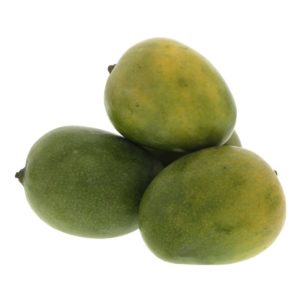
Season: May to July
Color: Saffron yellow with a red tinge
Shape: Ovate Oblique
Taste: Combination of sweet and sour
Other Characteristics:
- Excellent keeping quality
- Great for transport due to high keeping quality
- Medium-sized
- Tinier than most other mango types.
5. Alphonso/Hapus
Alphonso mango is unlike any other type of mango and is the king of all mangoes. It is a native to Maharashtra but is also grown in some parts of Gujarat, Karnataka and Madhya Pradesh. It is the most expensive variety of mango due to its distinct taste, color, and shape.
Color: Bright golden yellow with a tinge of red.
Shape: Voluptuous Oval-shaped (ovate oblique)
Taste: Sweet with Rich flavor & creamy texture
Other Characteristics:
- Non- fibrous and juicy pulp
- Popular all around the world
- Medium-sized (4-6 inches long)
Get Yourself a Box of Authentic Alphonso Mangoes!
6. Dasheri
This is the popular “chusne wala aam”. The homeland of this mango is Uttar Pradesh. It is the oldest variety of mango, and were first grown by the Nawabs of India.
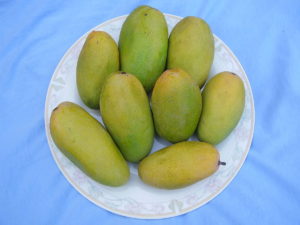
Season: June to July
Color: Yellow-green
Shape: Elongated
Taste: Extremely sweet
Other Characteristics:
- Fibreless
- Used to make a variety of chutneys
- Medium-sized seed
7. Totapuri
The Totapuri mango is the easiest type of mango to identify due to its parrot beak-like shape at the tip, hence symbolizing its name. It is from Andhra Pradesh, Karnataka, Telangana and Tamil Nadu i.e Southern part of India.
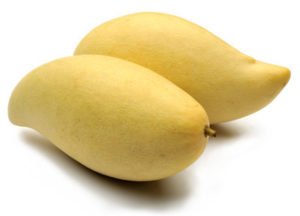
Season: June to July
Color: Golden Yellow
Shape: Oblong with beak like pointed end
Taste: Not Sweet
Other Characteristics:
- Great for salads, pickles and mango juices.
- Large in size
- Skin is very thick
8. Chausa
Back when Sher Shah Suri wanted to celebrate his victory over Humayun, he named his favourite mango- Chausa, the town of Bihar where these mangoes are grown and cultivated. These are seen at the end of the mango season.
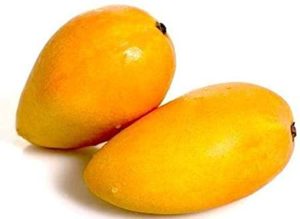
Season: July to August
Color: Bright yellow
Shape: ovate (egg-like) to oval oblique
Taste: Extremely sweet and aromatic
Other Characteristics:
- Mostly found in North India
- Fibrous flesh & juicy pulp
- Medium keeping quality and exported.
9. Himsagar
Amongst all the varieties of mangoes, this variety has the shortest season span of them all. Himsagar originates in Northeast regions of India such as West Bengal.
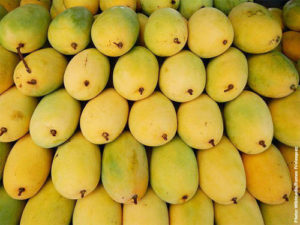
Season: May or June
Color: Green skin and bright yellow pulp
Shape: Ovate (egg like) shape
Taste: Extremely sweet
Other Characteristics:
- Thin skin & known for its aroma
- Good keeping quality
- Medium-sized
- Fibreless and fleshy
10. Langra:
This variety of mango was first grown by a farmer in Varanasi (Benaras) who was unfortunately disabled (limp) hence the name Langra came into being. It is very popular in West Bengal, Haryana, Bihar and Uttar Pradesh.
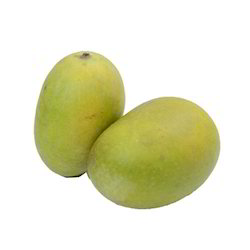
Season: Mid July to August
Color: Green
Shape: Ovate (egg-like)
Taste: Sweet
Other Characteristics:
- Fibrous
- High level of natural sugar
- Poor keeping quality
- Very thin skin
- Once ripened, it releases a very strong aroma.
Conclusion:
Now that you know the most popular and adored types of mangoes in India, you don’t need to be taken aback on which one to choose. It’s time to pick your favorite mango and enjoy it while the season lasts!


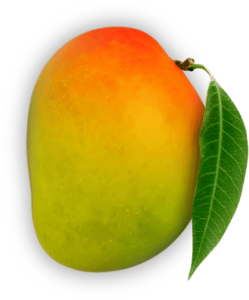
[…] Different Types of Mangoes In India You Should Know About! […]
[…] Eftersom jag aldrig tidigare ätit mango i Indien frågade vi en Bangalore-bo. Skulle den smaka så här? Eller var den inte mogen? Efter att ha tagit en liten bit ljusgult fruktkött berättade hon att den smakade precis som den skulle. Och när jag nämnde att all mango jag tidigare ätit smakat annorlunda påpekade hon att det ju finns mängder av mangosorter som alla smakar olika, inte minst i Indien https://devgadmango.com/types-of-mangoes-in-india/. […]
[…] Kesar mangoes got their name as the color of their pulp resembles saffron, a spice used in Indian kitchens. This variety of mango is popularly known as the ‘queen of mangoes’ in India. Junagarh, in Gujarat, is the place where juicy Kesar mangoes are grown and distributed all over the country. When it comes to export, the demand for Kesar mangoes is higher in the US as a large Gujarati community prefers Kesar over Alphonso. In 2020, of the total mango exports from the country, Kesar accounted for 50-55% of the total outbound shipment. […]
[…] rybelsus discount […]
[…] order clomid online […]
[…] sildenafil 50mg tablets price […]
[…] prices of cialis 20 mg […]
[…] cialis for daily use […]
[…] buy cialis pill […]
[…] generic viagra 50 mg […]
[…] cialis 100mg […]
[…] viagra 100mg price […]
[…] online cialis pharmacy […]
[…] buy viagra 100 mg online […]
[…] generic cialis online […]
[…] viagra 25 mg costo […]